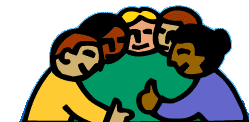|
It is important to remember that when dealing with an autistic spectrum disorder, this diet is not likely to be a "magic cure," although it could be very helpful. Following are some of the other therapies that we have found to be additional "pieces of the puzzle" as we have sought to help our children reach their full potential: |
|
SENSORY INTEGRATION THERAPY
When the brain is not able to properly analyze and respond to sensory input, "sensory integration dysfunction" is the result. Our boys benefited greatly from sensory integration (SI) therapy, and we as parents were trained by the therapists to do activities at home as needed. We have used the Wilbarger brushing technique, weighted blankets and vests, and exercises and activities which helped both boys to better respond to sensory input. See "related links" for more information on sensory integration therapy.
SPEECH AND LANGUAGE THERAPY
Having Asperger's Syndrome, our boys both had very advanced vocabularies. However, they had a much more difficult time with comprehension, particularly with answering questions. Speech and language therapy helped with this, sequencing, and social/pragmatic use of language.
PHYSICAL AND OCCUPATIONAL THERAPY
Although this is not the case with all children with autistic spectrum disorders, our boys both had difficulties with fine and gross motor movements. Physical and occupational therapists helped them with skills such as jumping, kicking, throwing, balancing, running, skipping, climbing, swinging, writing, and using other writing and eating implements. Particularly helpful was the information taht the therapists provided us, so that we could continue the exercises and instruction at home.
SOCIAL INTERACTION
Our boys have flourished in social settings; at school, in public parks, in music classes, in swimming lessons, and in church programs. They learn from their peers, and have gradually gained confidence. They also have much to teach their peers!
EXTRACURRICULAR ACTIVITIES
It is important for every child, with or without a diagnosis, to have activities that they enjoy. This may be an organized activity or class, or a family outing, or time to spend with a favorite hobby or special interest. |

